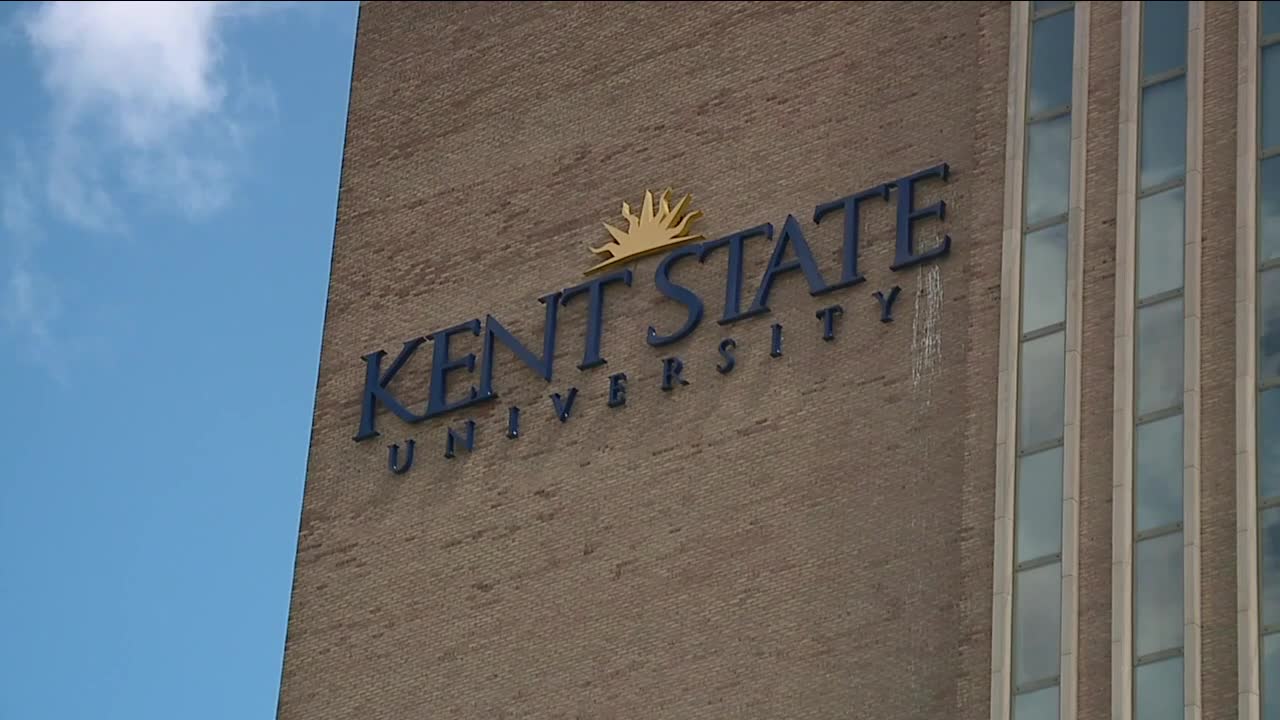KENT, Ohio — A five-day move-in period kicked off at Kent State University Wednesday ahead of the first day of class on August 27.
“It’s nice being back,” Savannah Matthews said. “Having some structure again.”
Assigned move-in time slots are staggered based on last name and dorm assignment in order to reduce large crowds and each student is gifted a welcome kit with two KSU masks and sanitizer upon arrival.
“We are not testing all students who are coming back but we are testing students who are symptomatic,” Manfred Van Dulmen said.
Housing facilities are operating at a smaller capacity with approximately 3,800 students spread among 23 residence halls.
“Students are allowed to have one visitor in their room at a time,” Van Dulmen said. “If they have a roommate, their roommate also at the beginning of the semester has to agree.”
The drastic changes are visible - with more than 90,000 printed flyers reminding students and staff to practice social distancing.
Administrators have implemented smaller class sizes, limited campus activities, and fewer students living in dorms.
“On average, we’re somewhere between 20 and 25% of our pre-COVID utilization of classroom capacities,” Jay Graham said.
Graham said classrooms will be professionally disinfected frequently and sanitization stations have been installed in classrooms and lecture halls.
“They will be cleaned on a heightened schedule through the university,” Graham said. “The students will clean up their spaces. It gives them peace of mind that they have some control over making sure that the spaces are sanitized for them and then the faculty as well up at the teaching stations.”
However, students and faculty will not be screened for fever or other symptoms at the door.
“A lot depends on human behavior and we’re seeing what’s happening in the national headlines, but at Kent, we feel that we’ve prepared our facilities,” Graham said. “So we are not taking temperatures at classroom entrances, but it’s up to them to self-assess and they can call our task force at the health center to report any symptoms.”
Van Dulmen said positive cases among students and staff members are inevitable.
“We know there will be positive cases on campus,” Van Dulmen said. “As you also see at other institutes of higher education, that’s the reality.”
However, administrators believe the creation of isolated living facilities for students who have tested positive and those waiting on test results will help to slow the spread of the virus.
“You just have to worry about what your other roommates are doing,” Matthews said. “Who they’ve been seeing and all that.”
Ultimately, contact tracing will be up to Portage County health officials.
“The contact tracing I think for many institutions is one of the areas that is a challenge,” Van Dulmen said. “Contact tracing is the responsibility of the local health departments but we’re assisting with this team on campus to make sure that they have the information they need.”
Van Dulmen said health precautions will be loosely enforced per the student code of conduct.
“We’re referring to our classroom disruption policy and we’re asking instructors, when a student shows up without a face covering to first offer a face covering,” Van Dulmen said. “If a student is not willing to take a face covering the instructor will ask the student to leave. If the student is not willing to leave, the instructor will dismiss the class and follow up with communication to the student.”
And what about students whose letter grades depend on class attendance? Van Dulmen said instructors have been asked to be lenient.
“Let our students have a note if they’re sick. We don’t want anybody who feels kind of achy to come to campus,” Van Dulmen said. “So we’ve not changed the formal policy but we have a temporary policy in place where we’re asking instructors to be flexible.”
Savannah Matthews is returning to campus for her sophomore year after abruptly being instructed to return home to Illinois in March.
“It’s surreal. It’s pretty bizarre,” Matthews said. “I left for spring break and just didn’t end up coming back at all.
She said a collective effort of responsible decision making is the only way for higher education institutions to carry on.
“I’m going to be in my dorm the whole time except for when I’m at practice, so I’ll be good hopefully,” Matthews said. “All of my classes are remote. I think they have a mix of remote and hybrid for other students as well, so I think they’re doing okay for right now, but I guess we’ll see in a couple weeks.”



